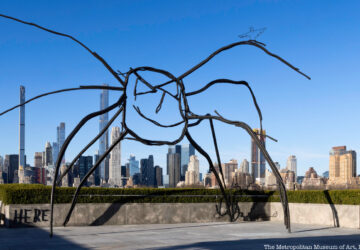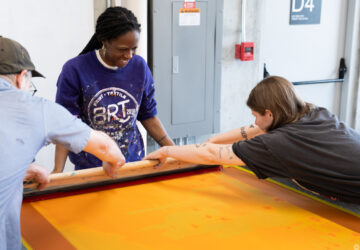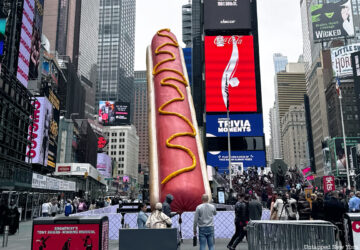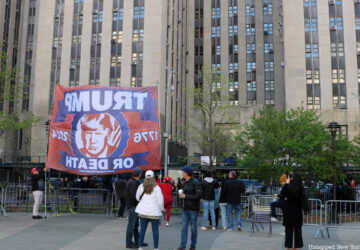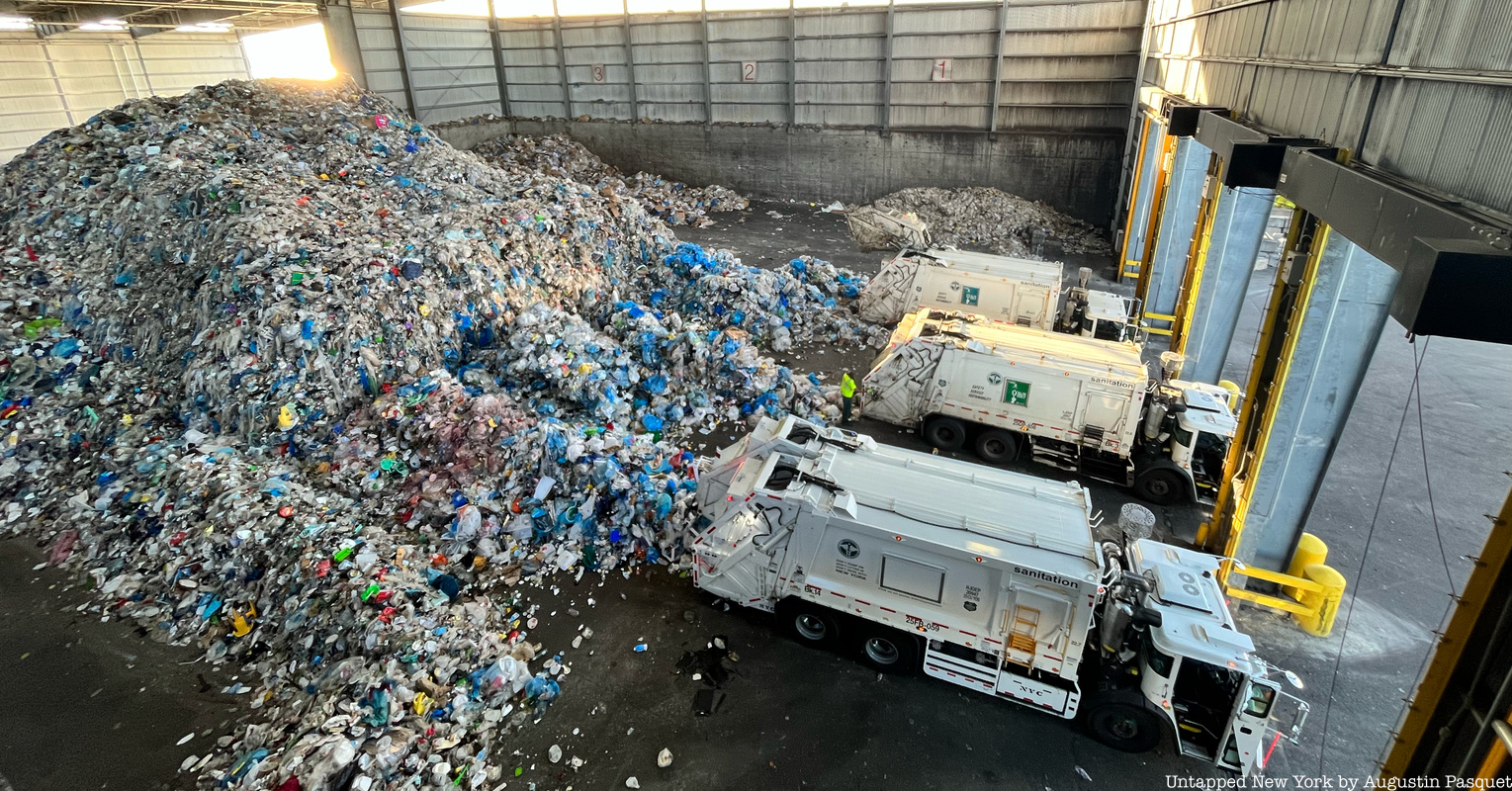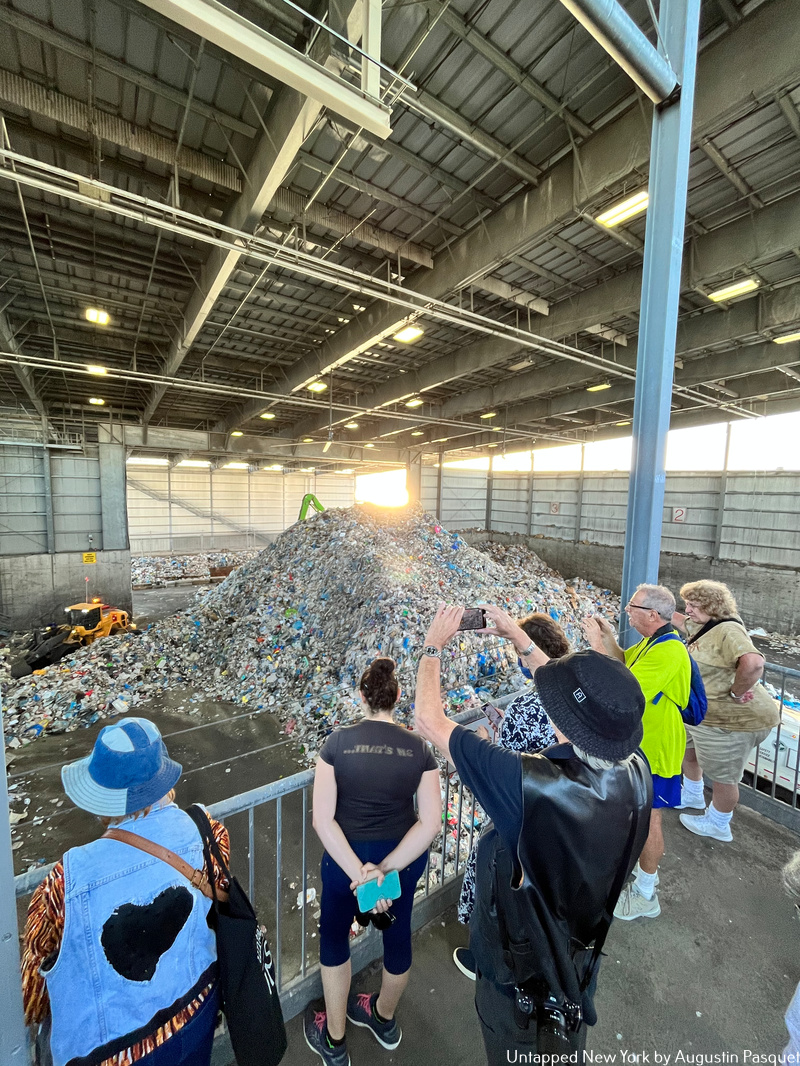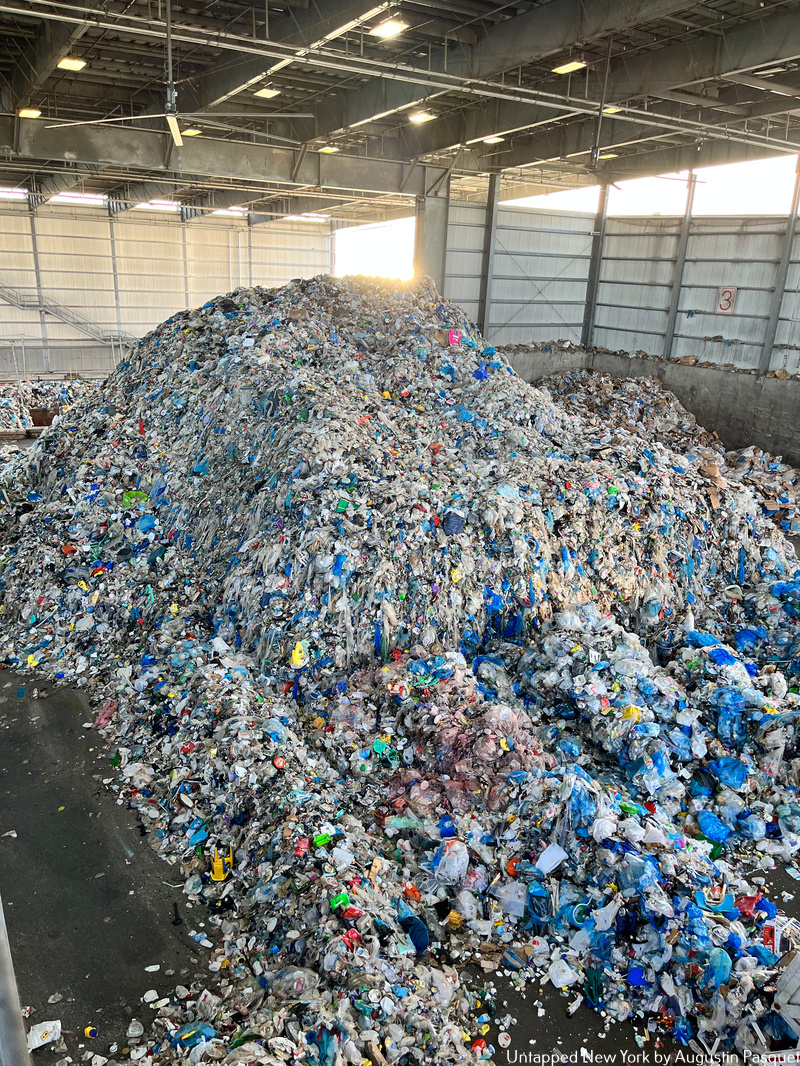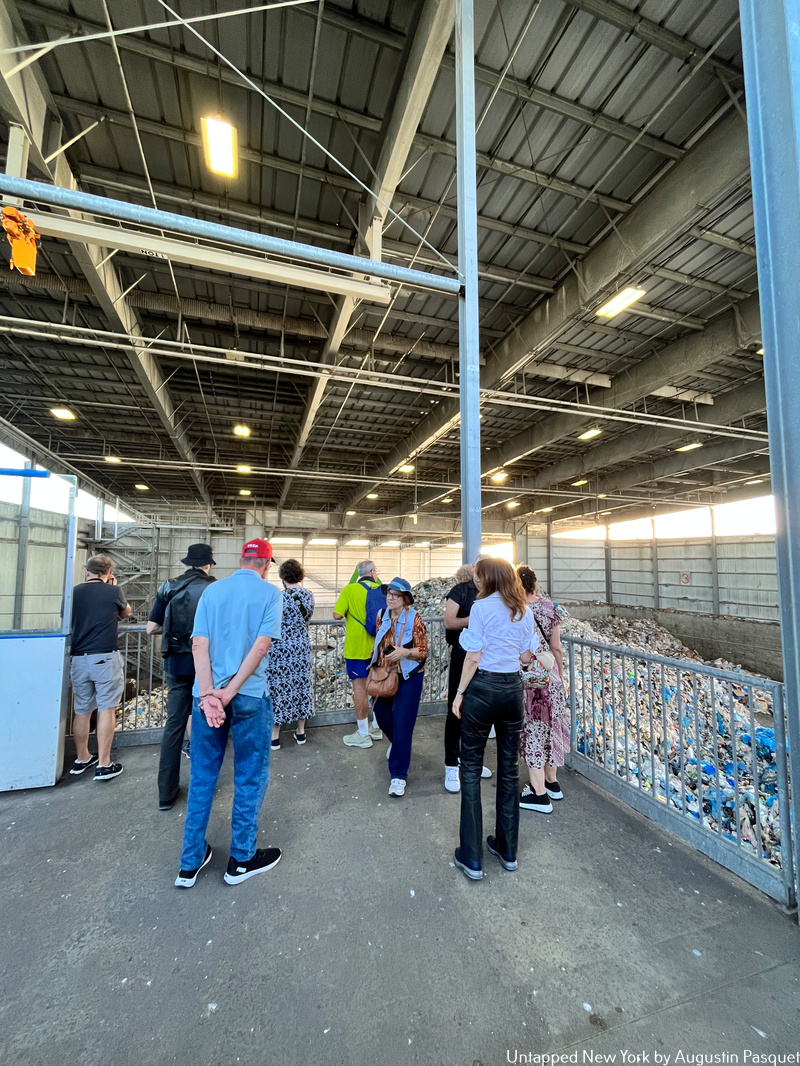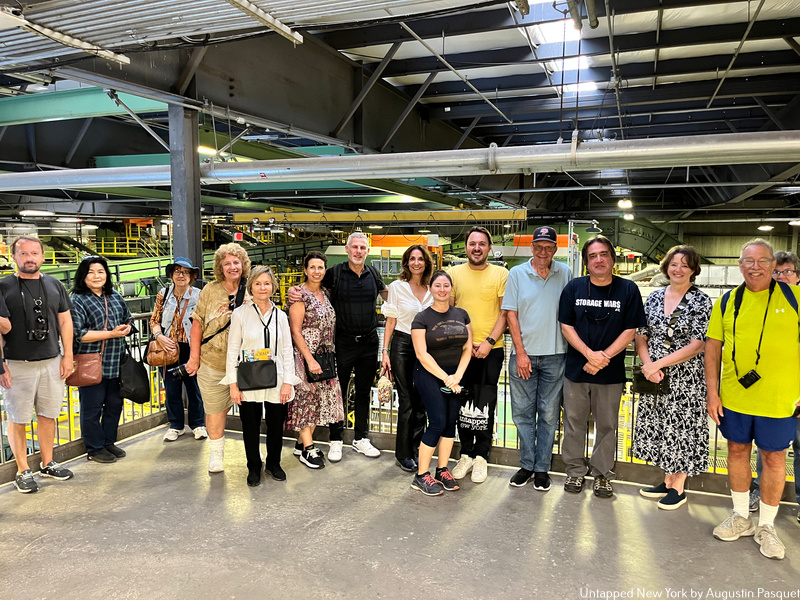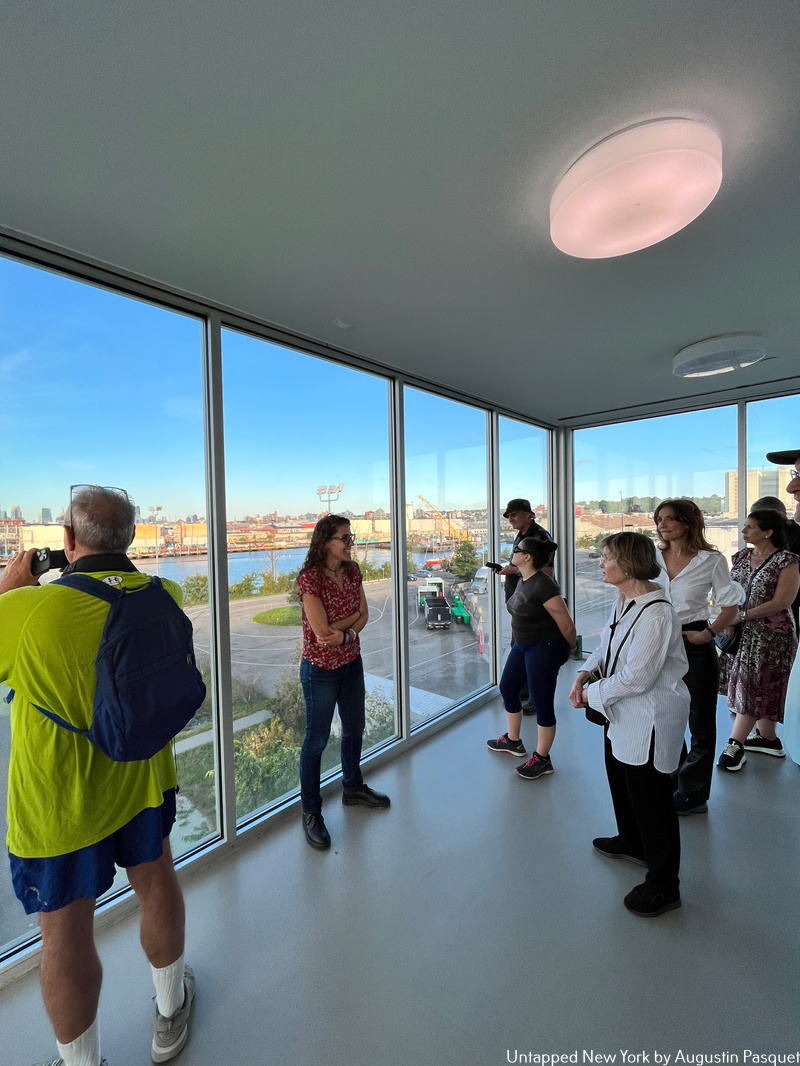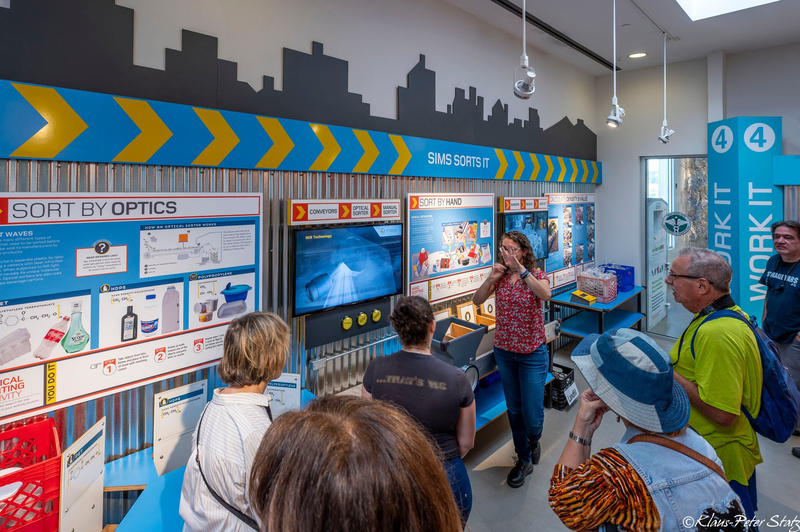Every day, around a thousand tons of recycled materials are dumped into towering piles at the Sunset Park Material Recovery Facility (MRF). This state-of-the-art facility on Brooklyn’s waterfront sorts and processes recycling from all five boroughs. On a recent behind-the-scenes tour, Untapped New York Insiders got to learn about the inner workings of the facility, the largest in the country by volume!
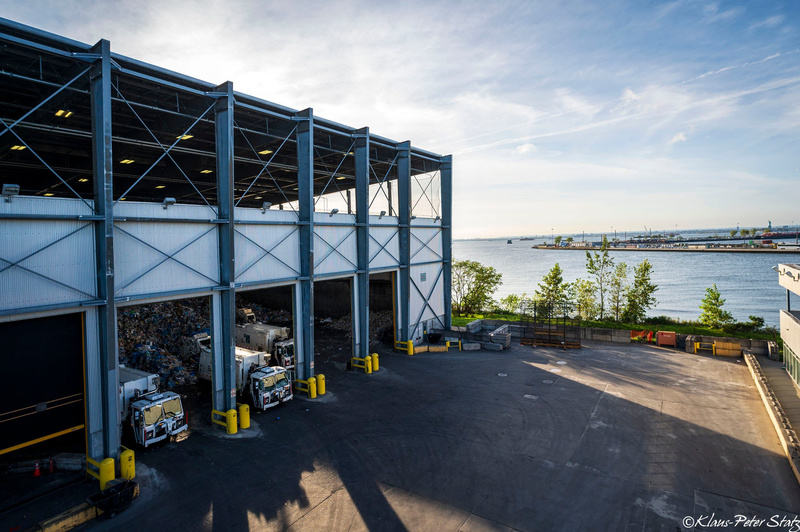
MRF is located atop the 11-acre, 29th Street pier at the South Brooklyn Marine Terminal in Sunset Park. The building was designed by Selldorf Architects and sits atop the former site of an NYPD impoundment lot. Completed in 2014, the structure is partially made of recycled materials. The land it sits upon was filled in with glass, asphalt, and rock from the construction of the Second Avenue subway, and recycled steel and glass were used on the building and its plazas.
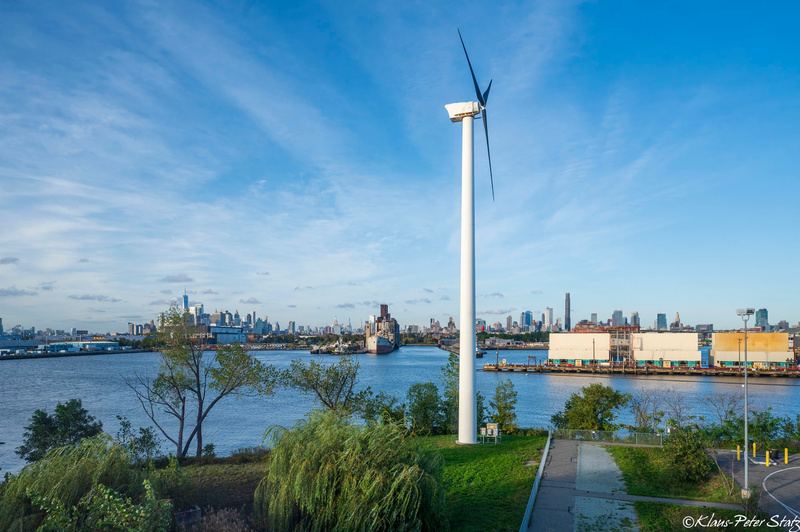
Before stepping inside, we took in the views of Lower Manhattan across the water and looked up at the 120-foot wind turbine, the first and largest commercial turbine in the city. It’s 160 feet tall if you count the blades! This turbine provides 4% of the energy used by MRF. A total of 20% of the energy used at the facility is produced by renewable sources, including one of New York City’s largest solar power installations.
MRF’s location on the water allows it to accept materials from trucks, rail, and barges. This helps to drastically cut down the amount of miles driven by collection trucks. Materials from Queens and the Bronx largely come by barge, while material from Brooklyn comes mostly from Department of Sanitation trucks. One barge can hold around 100 truckloads of materials. What comes into the facility is residential curbside metal, glass, carton, plastic, and paper and cardboard recyclables.
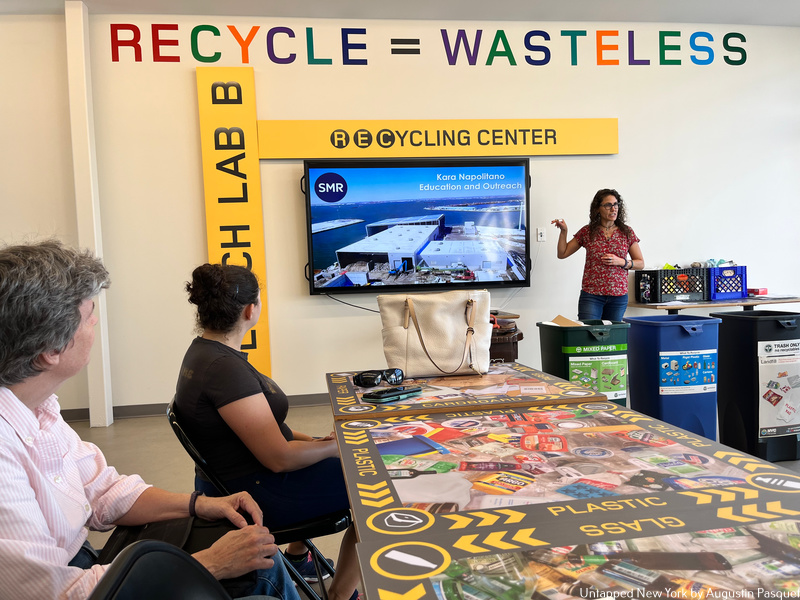
Our tour of the facility started in the Recycling Education Center. This space features classrooms, a theater, and interactive exhibits where school groups and adults can learn about the recycling process. As we walked through the informative exhibits, our guide, Kara Napolitano, Education and Outreach Coordinator, explained each part of the recycling process, from when it gets picked up from your curb to getting sorted at the facility and finally getting shipped out for its new use.
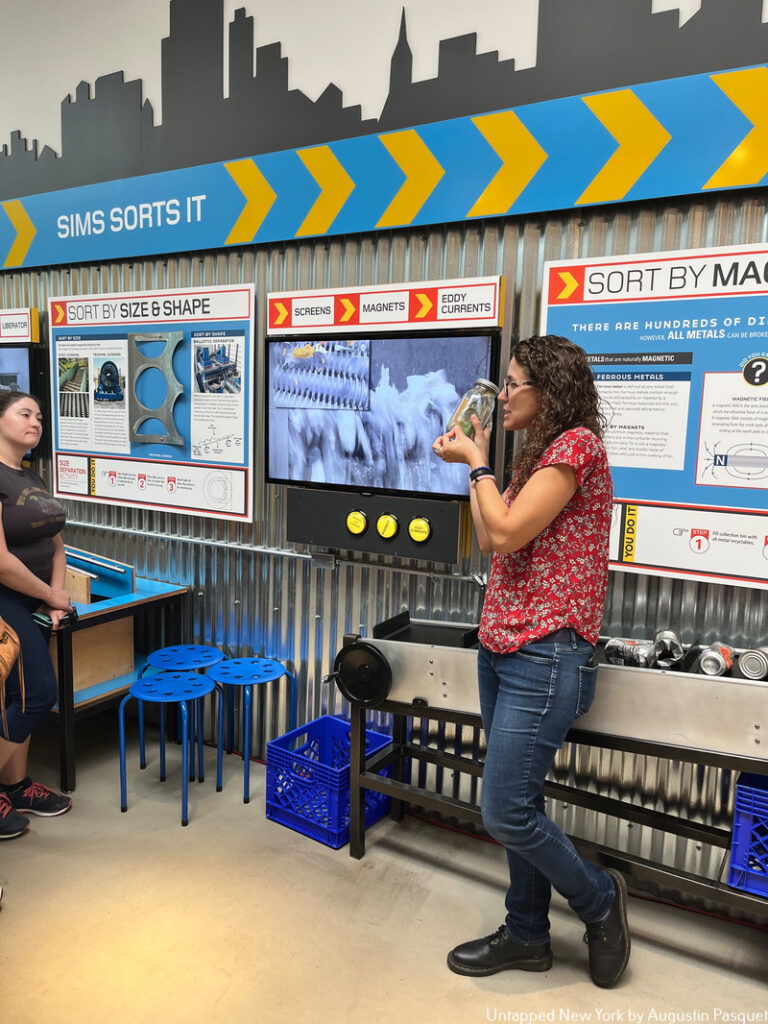
The very first step of the process starts with you! Once you’re done with your plastic water bottle, metal soup can, glass pickle jar, and cardboard pizza box, you place them in the appropriate bin for collection. Once it’s collected from your curb, the recycled materials are brought to the MRF and dumped in the Tipping Building.
In the Tipping Building, all of the mixed recycled materials from trucks, rail, and barges are brought inside the building via cranes and excavators. Insiders got to stand on the observation floor and watch the materials come in from above. There are two piles in the Tipping Building, one for metal, glass, cartons, and plastic and one for paper and cardboard.
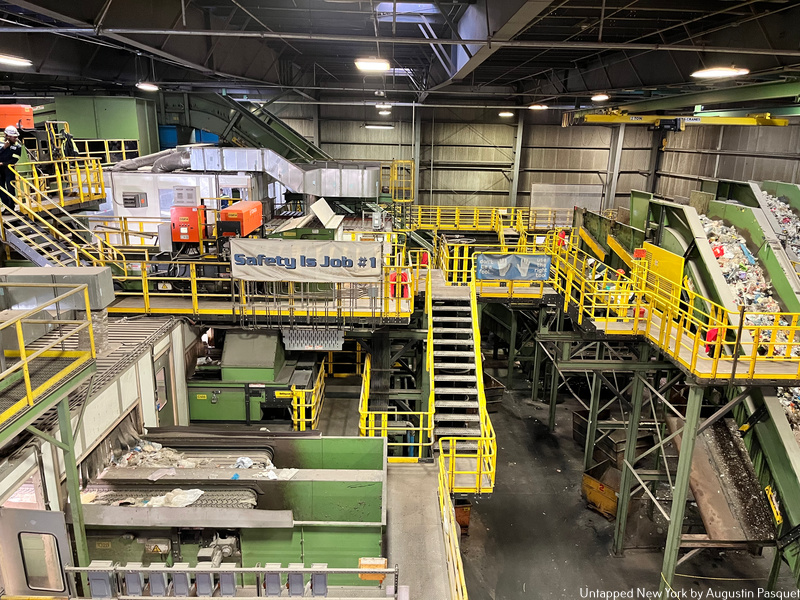
All of the metal, glass, plastic, and carton materials are pushed into MRF’s sorting machinery which contains about 2 and a half miles of conveyor belts. The machinery runs 24 hours a day for up to 6 days a week. Once pushed in, materials go through “The Liberator.” This slow-speed shredder rips open recycling bags and frees the materials.
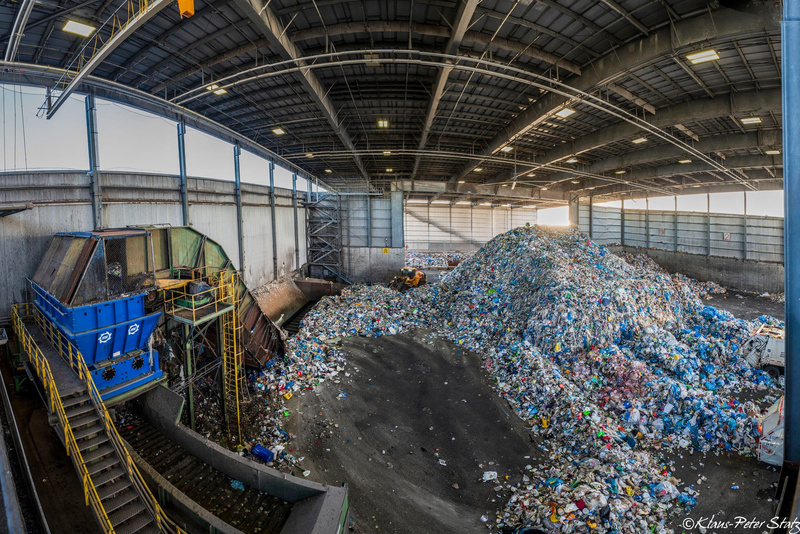
Next, the materials pass over rotating disc screens which break up pieces of glass. The shattered glass then falls between the discs to a conveyor belt below, along with any other materials that are smaller than 2 inches. Those glass pieces and small shreds of other materials then go to a glass sorting plant where they are further separated and the glass is sorted by color.
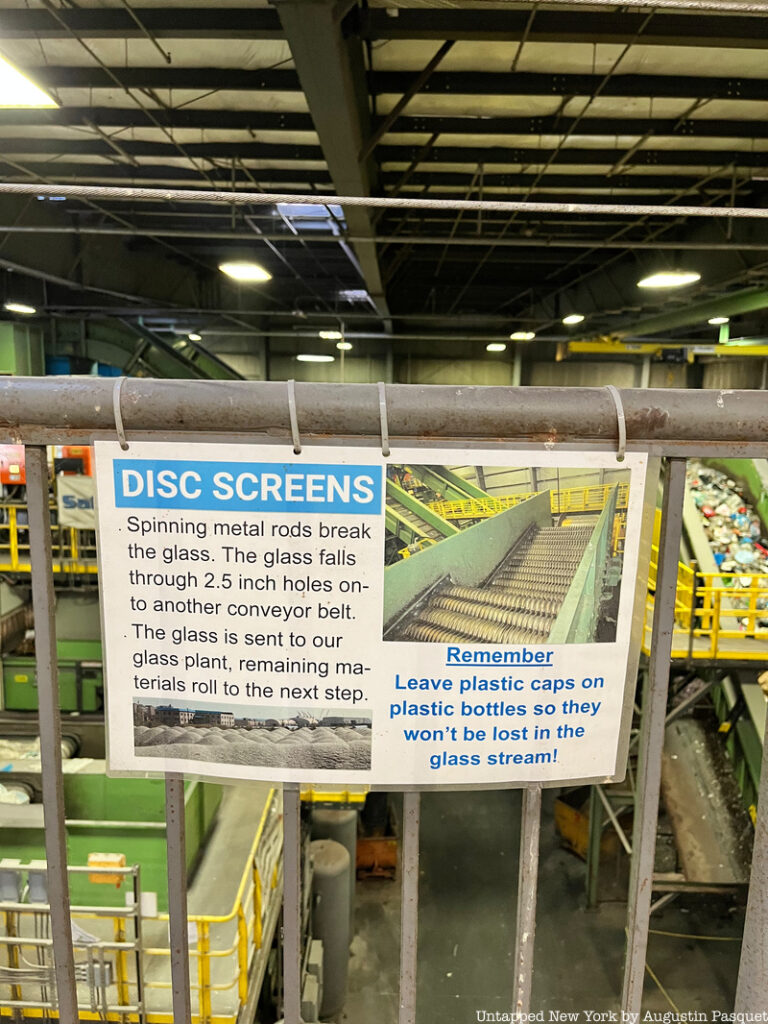
After the disc screens, everything passes under a drum magnet which captures ferrous metals. Anything not captured by the magnet is then ejected. Next, two-dimensional and 3-dimensional items are separated. Finally, plastics are sorted using optical scanners.
The plastics travel through an infrared scanner and the materials pass through the light, the sensor can tell what type of plastic it is. There are 16 different optical scanners at Brooklyn’s MRF which can be set to look for different factors of the plastic’s makeup such as color.
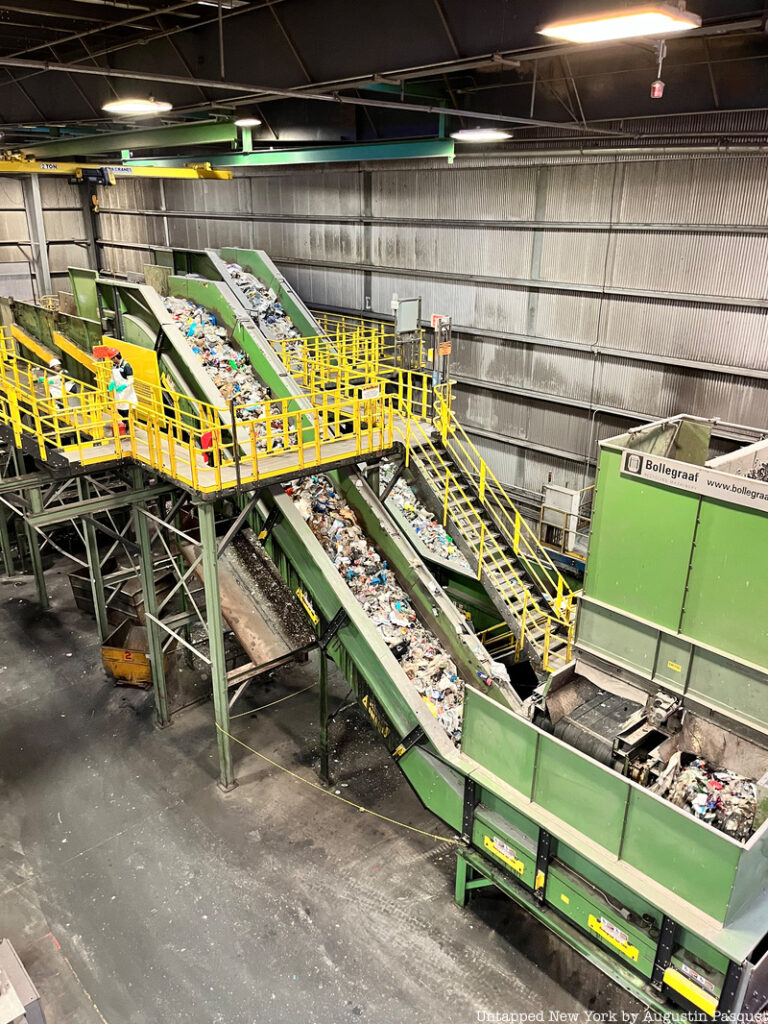
The final step of the sorting process is done by humans. There are around a dozen hand sorters who do a final check of the stream to remove items that don’t belong. Once that final step is done, the sorted materials are dumped into a bunker and then into a baler which compresses the materials into large cubes.
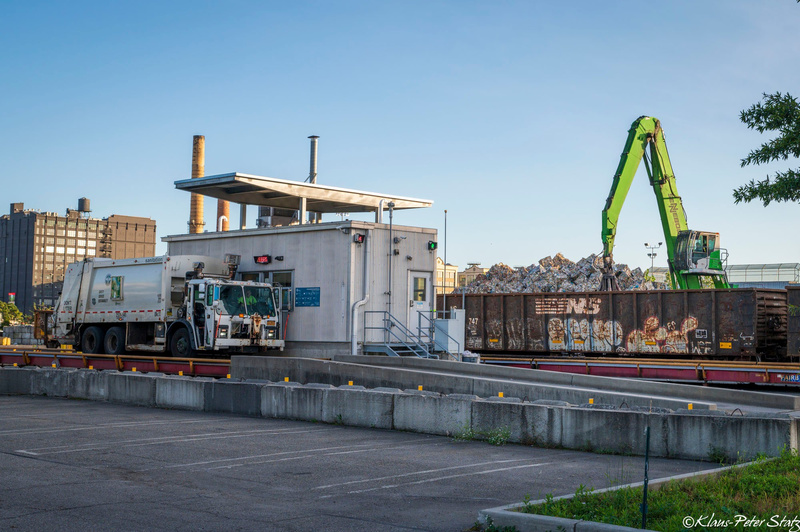
Materials are only sorted at the Sunset Park MRF. Once in bales, the materials are sold to other companies that will clean and transform the materials into something new.
Join us on our next Insiders adventure by becoming a member today! Use code JOINUS for your first month free and unlock access to members-exclusive in-person and virtual experiences, as well as our archive of 200+ recorded webinars and livestreams!
Next, check out all our upcoming Untapped New York Insider events!
